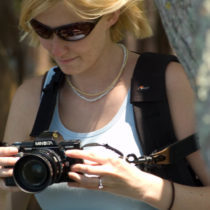Landscape Architecture for Landscape Architects › Forums › PLANTS & HORTICULTURE › Underground tree anchoring systems
- This topic has 1 reply, 5 voices, and was last updated 11 years, 5 months ago by
 Rory Knutsen.
Rory Knutsen.
-
AuthorPosts
-
March 7, 2014 at 11:44 pm #152992
 Davor BaricParticipant
Davor BaricParticipantGreetings fellow professionals! 🙂
In the past when planting large trees with big root balls, I’ve always worked with stakes. Usually using 2-3 per tree which ended in projects looking somewhat ugly! Especially when there were more trees planted.
But recently I’ve come upon several systems that use underground anchoring in different ways – some use metal rods driven in the ground while others use metal cables also driven in the ground and either anchor the root ball or the tree trunk via straps or metal cables.
I would like to hear from people who used those products. What were your experiences in general with these systems? Had they fulfilled what they promised they would? How did the trees react to them?
Thank you all for your answers.
D!
June 18, 2014 at 1:04 pm #152997 Rory KnutsenParticipant
Rory KnutsenParticipantDavor,
All systems have positives and negatives.
Above ground systems using stakes and guy wires can cause trunk damage if not attached correctly and removed as well as are unappealing. Also, we have to assume that the contractor will continue the maintenance and removal of the stake and guy wires after the site is turned over to the owner. Though they are the cheapest of the systems, they also produce tripping hazards for pedestrians and can be problematic for lawn crews when mowing and trimming.
Anchor rootballs below grade eliminates the above negatives but you should choose the system that best suits the project and selection of trees. You should look for what materials are being used on the system and what kind of footprint will be left. Also, the be aware of what is being used to provide tension to the top of the rootball and whether the rootball has the sufficient strength. Sheering the rootball is common when anchoring with straps so be conscientious with the type and width of the material that will spread the load on the root surface. Thick materials that do not conform to the shape of the rootball can commonly begin pushing through the nursery line and heave the ground above creating an eyesore and tripping hazard.
Check out http://www.platipus-anchors.us
June 19, 2014 at 4:29 am #152996Ernst Glaeser
ParticipantI agree with Rory.
Each project, each tree type, each tree size – caliper and/or height (crown as well as trunk), have their right of existence, usage, and aesthetics.
Streetscape trees with a clear trunk height of just 3 to 4 m and small caliper with tree grate look much bigger with the proper stakes designed and installed.
Trees with shallow root system, trunk decoration all the way down, planted as a solitaire will look best when one uses a sub-surface system.
Big tree planting will need a more structural support best provided by multiple guying.
First function for all is to hold the tree stable in the ground so that the new root growth is not disturbed.
The rest is secondary aesthetics, extra function, client request, or time saver c&p.
June 19, 2014 at 9:50 pm #152995 Davor BaricParticipant
Davor BaricParticipantThank you for the replies.
Davor
July 5, 2014 at 7:09 pm #152994 Gary HowardParticipant
Gary HowardParticipantAll these methods can be made to work just fine. It is a tradeoff of expense and aesthetics. Start with the problem and work your way back to the hardware to use.
Gary
July 7, 2014 at 2:04 pm #152993 Laura DuplainParticipant
Laura DuplainParticipantWhile working on Florida DOT projects, we were specifying Tree Frog http://www.arborguy.com/ on a few projects and they seemed to work out well. As previously mentioned a bit on the pricey side in comparison to traditional tree staking, but aesthetically pleasing. We primarily staked 15 gal to 65 gal oaks/crapes/etc. and sabal palms up to 24′ CT. (Any sabals larger we staked traditionally)
-
AuthorPosts
- You must be logged in to reply to this topic.


